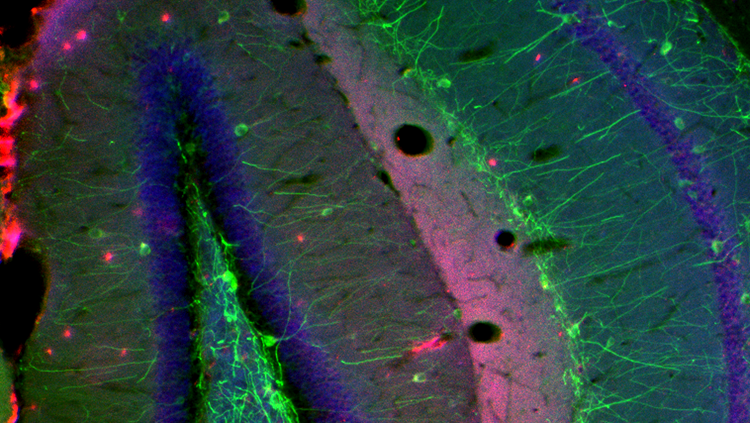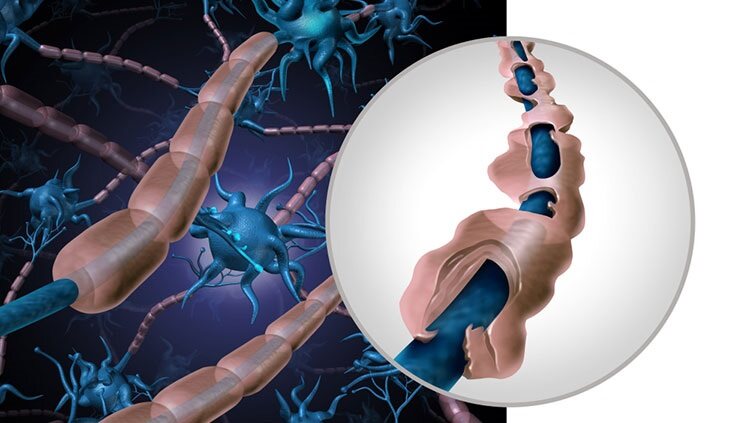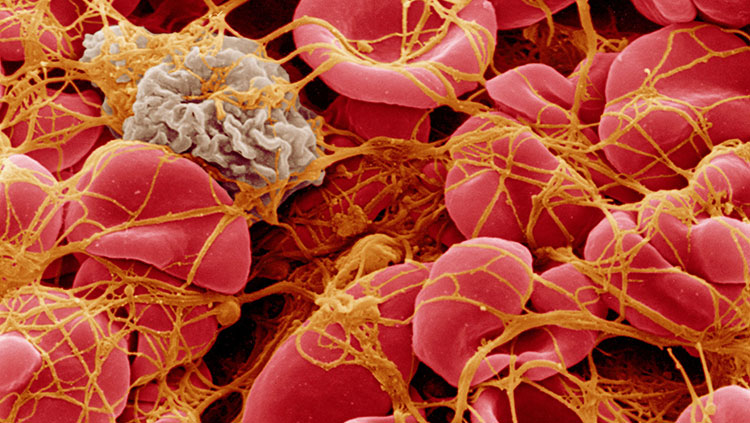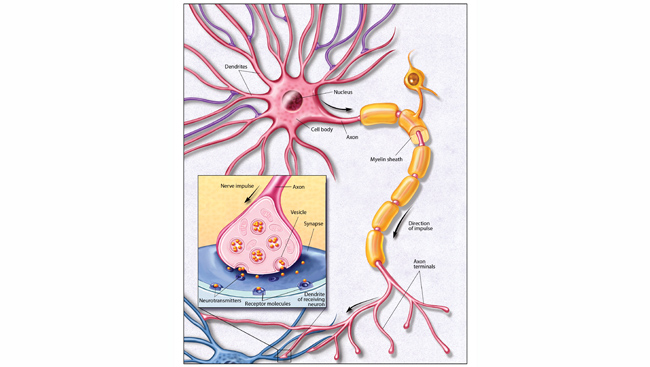Installing Insulation
- Published16 Jul 2019
- Author Michael W. Richardson
- Source BrainFacts/SfN
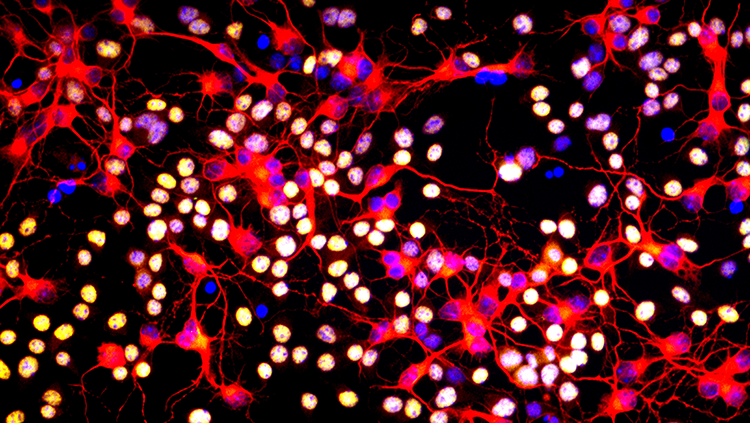
Much like the way wires are coated with non-conducting plastic or rubber, your nerve fibers are also wrapped in insulation. Called myelin, the insulation speeds the transmission of electric signals down the axon and prevents current from leaking out along the way. In the neurodegenerative disorder multiple sclerosis (MS), the immune system attacks myelin, damaging neurons and impairing their communications.
When scientists exposed neural precursor cells — immature cells that can develop into neurons, shown in red — to a particular protein, most of them transformed into oligodendrocyte precursors (yellow). The experiment may offer a few clues about ways to boost oligodendrocytes in diseases like MS.
CONTENT PROVIDED BY
BrainFacts/SfN
References
Michalski, J.-P., & Kothary, R. (2015). Oligodendrocytes in a Nutshell. Frontiers in Cellular Neuroscience, 9, 340–340. doi: 10.3389/fncel.2015.00340




